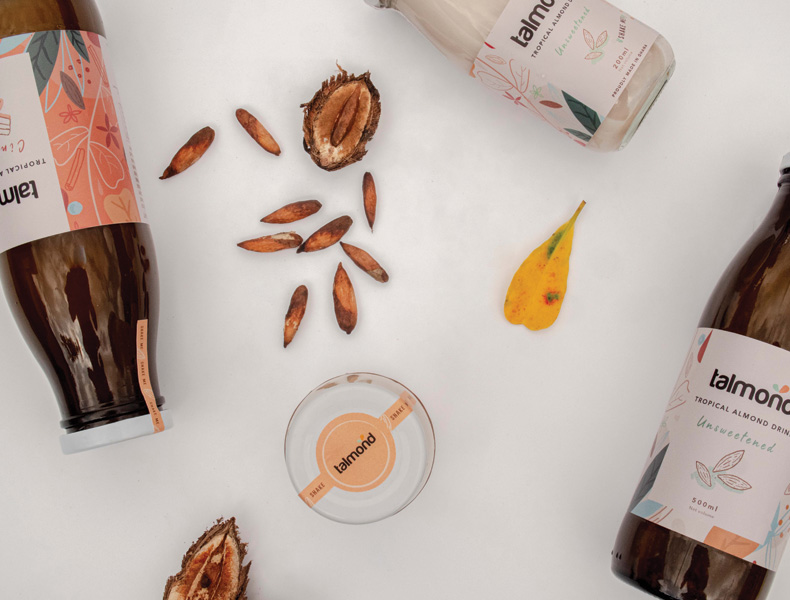Putting a Tropical Spin on Almond Milk
Elie Fink founded Talmond in Ghana to produce plant-based milk from tropical almonds.

Talmond tropical almond beverages. Photo courtesy of Talmond
Plant-based milk has grown popular around the world, with almond milk leading the category in many countries. However, the high water requirements of growing almonds make sustainability an ongoing concern. Ghana’s rain-fed tropical almond, a nut similar in taste and nutrition, offers a new solution.
In Ghana, agriculture is central to the economy, contributing 54% of the GDP and over 40% of export earnings, with 52% of the labor force involved in agriculture (FAO). Ghana’s forest agriculture, which includes export crops such as cocoa, coffee, and palm oil intercropped with maize, taro, and cassava for domestic use, is concentrated in the south of the country. Here, two rainy seasons (April–July and September–November) (World Bank Group) sustain these crops without the need for irrigation. Another forest crop grows here, as well: the tropical almond (Terminalia catappa), referred to as abrofo nkatie in Ghana.
The tropical almond, a locally known but underutilized crop, sparked Elie Fink’s venture into plant-based milk. She had been pursuing graduate research in olfactory neuroscience when she rediscovered Ghana’s tropical almond, a popular snack from her childhood. Recognizing its potential, she founded the company Talmond in 2019 to transform the nut into a healthy, tasty beverage for domestic and international consumption as well as creating manufacturing jobs and supporting smallholder farmers in a sustainable way.
The Process
Producing tropical almond milk in Ghana requires a number of steps. First, farmers collect the fallen nuts from the ground and place them in the sun to dry for about a week, prior to removing the outer shell. While the nuts can be cracked manually, the shell’s corky texture prevents the use of a standard cracking machine. To improve efficiency, Talmond hired a local engineer to build a commercial cracking machine suited for tropical almonds.
From here, production workers at Talmond freeze the nuts until needed or process them into a beverage by rinsing, soaking, grinding with water in a colloid mill, and filtering with cloth bags. They then add salt to make Talmond’s unsweetened beverage, and for its cinnamon beverage, they add honey, flavoring, and salt.
Finally, the beverages are hand filled using a funnel into returnable glass bottles, capped, pasteurized, and refrigerated. The small Talmond facility currently produces a maximum of 50 liters of tropical almond milk per day. With recent investments, Fink is exploring potential partnerships with larger facilities to increase production capacity. This will allow Talmond to expand its distribution in Ghana, as well as into international markets, such as Europe. To achieve the latter, the company will need to determine how best to increase shelf life, reduce packaging costs, transition to a shelf-stable product, and meet international food regulations.
As Talmond continues to build the tropical almond value chain—from establishing a breeding program to developing new value-added products like tropical almond flour for baking—the company is contributing to a more resilient food system in Ghana, with potentially far-reaching benefits.ft



